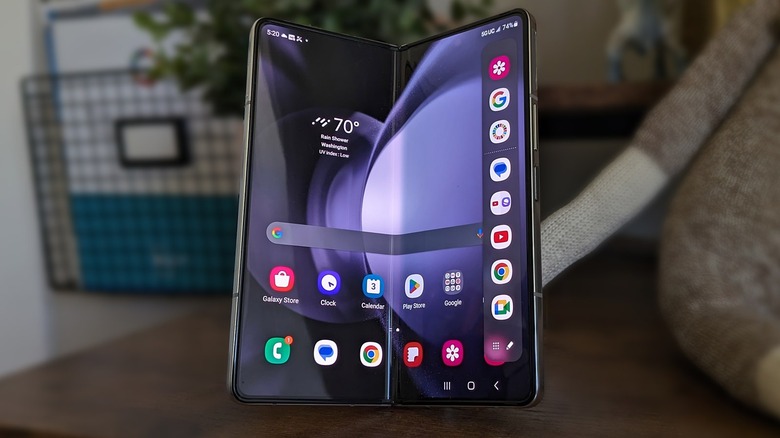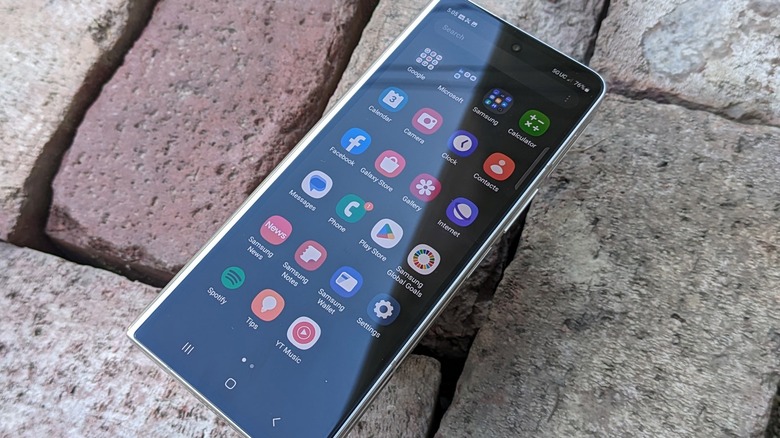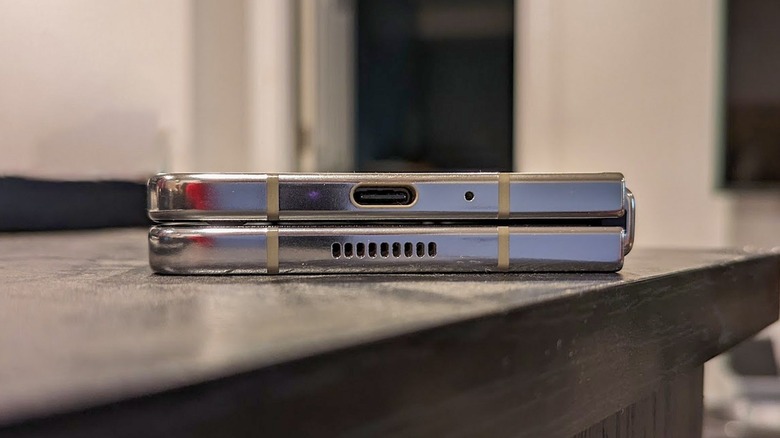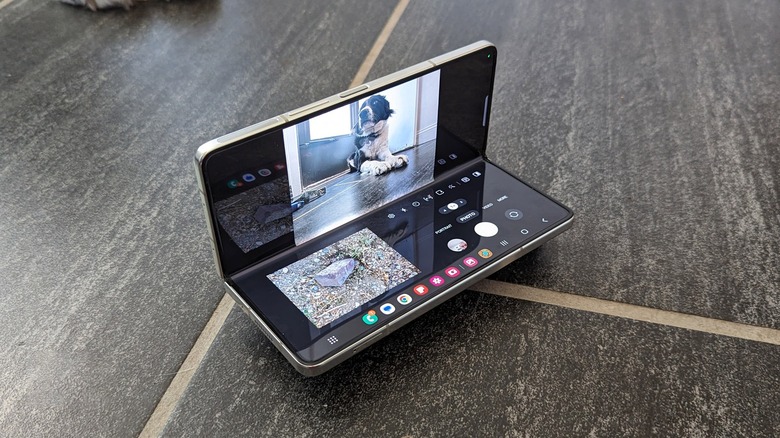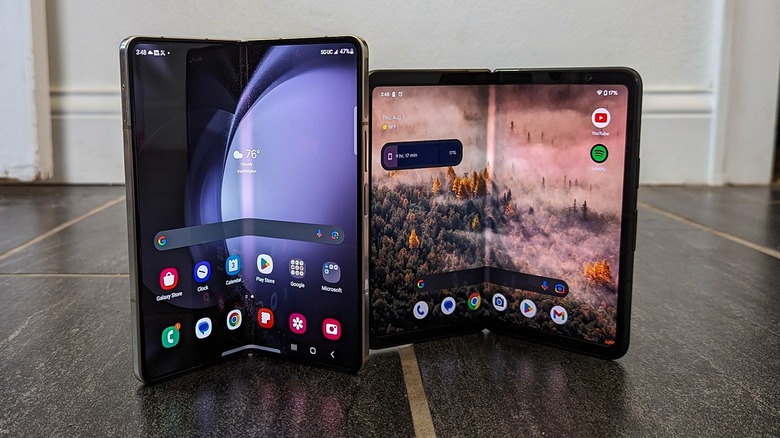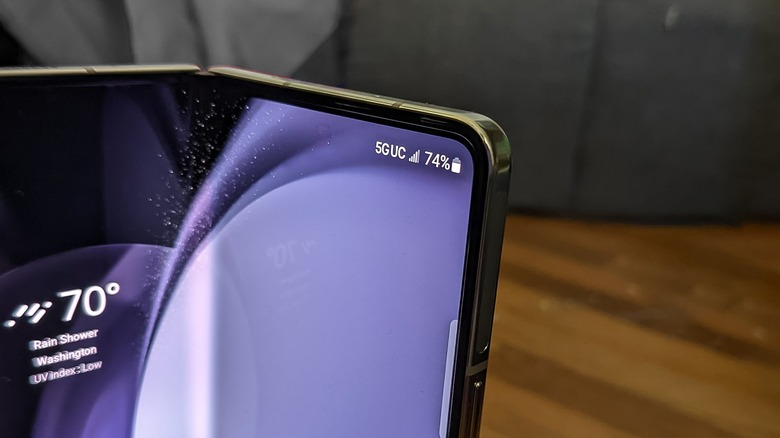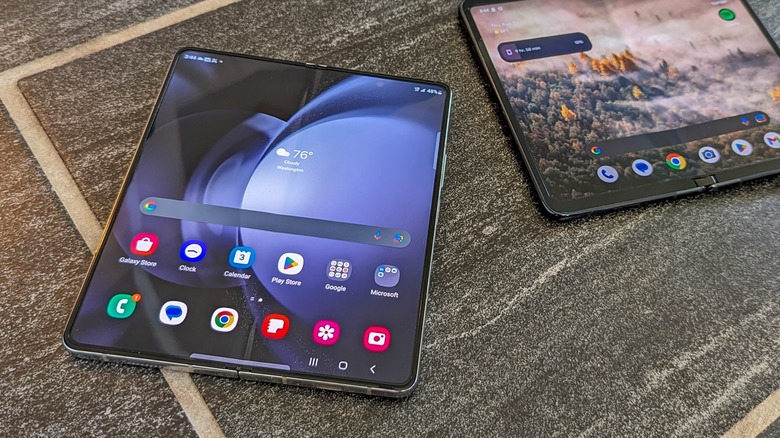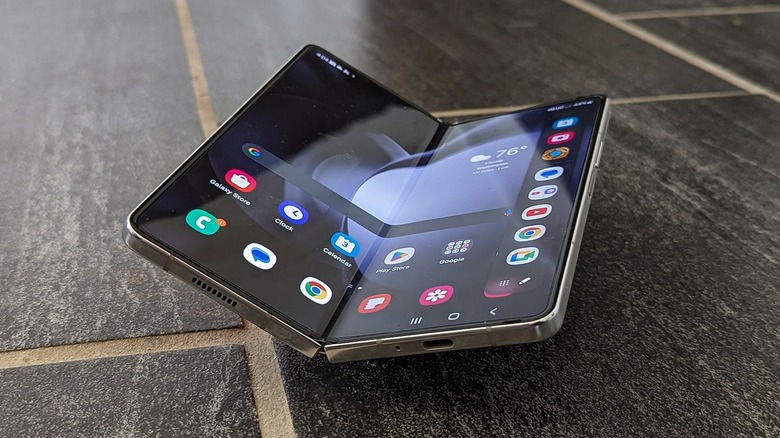Samsung Galaxy Z Fold 5 Review: Not Getting Any Cheaper
- The best foldable display yet
- Top-tier back-facing camera array
- Finally folds flat
- Entire experience has moved beyond Early Adopter status
- Samsung's software makes transforming Android feel natural
- Beautiful hardware all-around
- Still exceptionally expensive
- Should come with a protective case by default
- Charging speeds are still just OK
We may receive a commission on purchases made from links.
The Samsung Galaxy Z Fold 5 is one of the most extravagant, beautiful mobile communication and entertainment devices in the world today. But what happens when you drop it? This device is fantastic, so long as you're fully aware of the risks that go with purchasing a device with hardware that has, by its nature, a high potential for mishap.
Over the past few years, Samsung's put in the work to be the master of the foldable display — at least when it comes to mobile smart devices. Now that we're on the fifth iteration of the company's most high-end foldable smart devices, it's high time the device line was ready for the average user.
The displays on this device are effectively identical to those of the Samsung Galaxy Z Fold 4, and the rest of its specifications could easily be mistaken for last year's model. But now there's a newer mobile chipset inside, faster memory,
Samsung provided a Galaxy Z Fold 5 for the purposes of this review.
Two Displays
This foldable device has two displays. The "Cover" display is tall and narrow — 6.2 inches of Dynamic AMOLED 2X display with 2316 x 904 pixels across its face. That's the same as the Galaxy Z Fold 4. This Cover (or front, or external) display is almost certainly narrower than whatever smartphone you're using right now. This will affect how you use the device — typing with this device is more difficult than it is with a wider display, at first, but it's not unmanageable.
Both the Cover and the Main display have 120Hz adaptive refresh rate panels, but the external panel varies between 48 and 120Hz, while the Main display goes all the way from 1 to 120Hz. Both displays are Dynamic AMOLED 2X, which means they're some of the brightest and most colorful displays you've likely ever seen.
The Main (foldable) panel is a 7.6-inch "Infinity Flex Display" with 2176 x 1812 pixels jammed inside. There's a front-facing camera in the Cover display that appears in a punch-hole, while another front-facing camera appears (or barely appears) as a UDC — Under Display Camera — under the foldable display.
Folding Flat
This is the first Samsung foldable smartphone to fold flat. Before now, each foldable smart device released by Samsung had a little bit of a gap at the hinge. This device feels like the final product of an ideation process that's taken several generations to complete.
Folded closed, this device keeps both sides of its folded display apart and safe from one another with a bezel and a set of bumpers. The bezel is a semiflexible plastic, while the bumpers are more akin to rubber — though they're so extremely tiny, it's nearly impossible to tell.
The inclusion of this two-material solution around the edges of the display makes the device feel more high-end than foldables like the Google Pixel Fold. The Google Pixel Fold unfolds flat (more or less) and relies on an extremely thin, flat bezel of plastic to protect the display while closed. The bezel around the Galaxy Z Fold 5 is almost like a miniature tube around the display.
While having a single bezel width and size around the whole display isn't absolutely necessary in making a beautiful smartphone, in this case, Samsung applied this design to great effect. Absolutely equal bezels — not only around each side but around each corner — make for a presentation that's unparalleled.
Cameras front, inside, and back
The Samsung Galaxy Z Fold 5 has a set of cameras that are primarily the same as those that come with the Galaxy Z Fold 4. That includes an Ultra Wide, Wide, and Telephoto lens on the back, a 4-megapixel camera with f/1.8 aperture and 80-degree field of view inside, and a 10MP camera on the Cover display with f/2.2 aperture and an 85-degree field of view.
The Cover display camera is impressive — it's among the best front-facing cameras SlashGear's ever tested. The camera under the foldable display is also fine but is limited in quality due to the method used to hide the lens behind the display. Because of this (otherwise very impressive in hiding the lens behind the display) tech, photos and video end up having a hazy look to them — which, to be fair, is easily remedied with software like Photoshop.
The cameras on the back of the device stick out from the device a considerable amount. Because it's difficult to imagine using this device without a protective case, it's easy to look past this massive block of hardware sitting in such an awkward position. It's clear that the designers of this device (and its predecessors) did not intend for the hardware to sit flat and open on a flat surface.
Photos get better while cameras stay the same
Above and below you'll see an array of photos captured with the back-facing cameras of the Samsung Galaxy Z Fold 5. Results have been roughly equivalent to those of the Galaxy Z Fold 4 with regard to the most challenging environments — low light and moving subjects included.
Meanwhile, it would appear that Samsung is making efforts to improve this device's photography abilities through software, rather than hardware — since, again, we're working with camera hardware that's effectively the same as can be found in this device's predecessor. Samsung's array of user-friendly photo feature perks makes this device all the better.
Outdoors on a bright sunny day, the photos this device can capture are so good that it's shocking Samsung didn't include a macro-friendly lens in the mix. Even so, what we have here is a highly capable piece of photography equipment.
One of the most enticing features of this smartphone is its ability to make use of its foldable display when capturing photos. You can snap selfies with the back-facing camera. You can fold a bit and allow the device to be its own stabilization system on a flat surface when capturing group photos.
Foldable software
With the latest version of Android modified by Samsung for this device specifically, the Galaxy Z Fold 5 embodies the brand's efforts to make the most of a transforming smartphone. Samsung is no longer struggling to make certain each app fits in the given space or transitions between two extremely different aspect ratios.
Instead, Samsung delivers Android at its very best. There's still a set of apps on this device that you'll likely ignore or delete when you first turn the device on. But Samsung's created an environment that balances the best parts of Google's Android and their own value-adding foldable features.
If you're attempting to compare the Samsung Galaxy Z Fold 4 to the Google Pixel Fold, you'll find that the differences are extreme enough that you will not regret your decision after you've made it. That is assuming you've properly considered the cost.
The starting price of both the Pixel Fold and the Galaxy Z Fold 5 are the same. If you're only buying one or the other to browse social networks and snap photos, buy whichever one you can get for a bigger discount. If you're considering the Z Fold 5 and the Pixel Fold and want the one that feels like a higher-end, robust, and generations-deep experience, get a Samsung Galaxy Z Fold 5. In either case, do yourself a favor and buy a protective case at the same time as you purchase the phone.
Battery life and charging
The Samsung Galaxy Z Fold 5 has a 4,400mAh battery inside. Like its predecessors, this device splits its battery capacity between two units — though at the moment it does not appear that this makes any difference in how fast the device can charge or how long its battery capacity will last.
When using a Samsung-approved 25W adapter and a 3A USB-C cable, this device can go from zero to 50% charge in approximately 40 minutes or less. Fast Wireless Charging (2.0) is also ready to roll in this device, which means we're getting charging speeds that are considerably faster than the drip-drop speeds of wireless charging tech in mobile devices a few short years ago.
The wireless charging pad inside this smartphone also works with Wireless PowerShare. That means that the area on the back of the device just under the camera array has the ability to act as a Qi-compatible charging pad. Just so long as "wireless power sharing" is toggled on in the device's battery settings, and the device's battery is above 30%, it'll charge other Qi wireless charge-friendly devices like a charm.
Assuming you're using the Fold 5's full 120Hz display refresh rate and your brightness is above 50%, it's unlikely you'll reach a full day of gaming and photography with a full battery. If, on the other hand, you never unfold the device and have your display brightness set to minimum, you can easily roll through more than a day of light use.
Price Considerations
This smart device has a starting price of around $1800, just like its predecessor. That's for the 256GB internal storage version of the device — you can also pay around $2020 for a 512GB version, or about $2160 for a 1TB version. That's before promotional prices, deals that'll pop up for pre-orders, and eventual discounts from carriers.
At the moment if you purchase one of these devices from the Samsung Store you'll get a "free storage upgrade." That means you'll pay around $1800 for the 512GB version or around $2010 for the 1TB version. By the time you read this review, that deal may have changed — but it might have been replaced with a different one, who knows?
The Galaxy Z Fold 5 comes in a variety of colors including Blue, "Icy Blue," Cream, Gray, and "Phantom Black." Gray, Blue, and Phantom Black all have a darker-toned metal around their edges and camera array, while Cream and Icy Blue have lighter tones.
Wrap-up and verdict
Much like the foldable monster that came before it, this device is the most over-the-top smartphone experience on the market today. It costs a pretty penny, but the Samsung Galaxy Z Fold 5 is far enough ahead of the competition that you won't likely regret spending the cash.
If you already have a Samsung Galaxy Z Fold 4, it'd probably be wise to just stick with what you've got, as it'll be difficult to tell the difference — save the flatness of the fold. If you've already purchased a Google Pixel Fold, you have a difficult decision ahead of you. Do you fold like a pamphlet, or do you fold like a passport?
In any case, as with any foldable, your decision will come down to necessity. Do you want to be able to expand your smartphone whenever you want, or does it make more sense for you to stick to the classic flatness of a standard smartphone?
